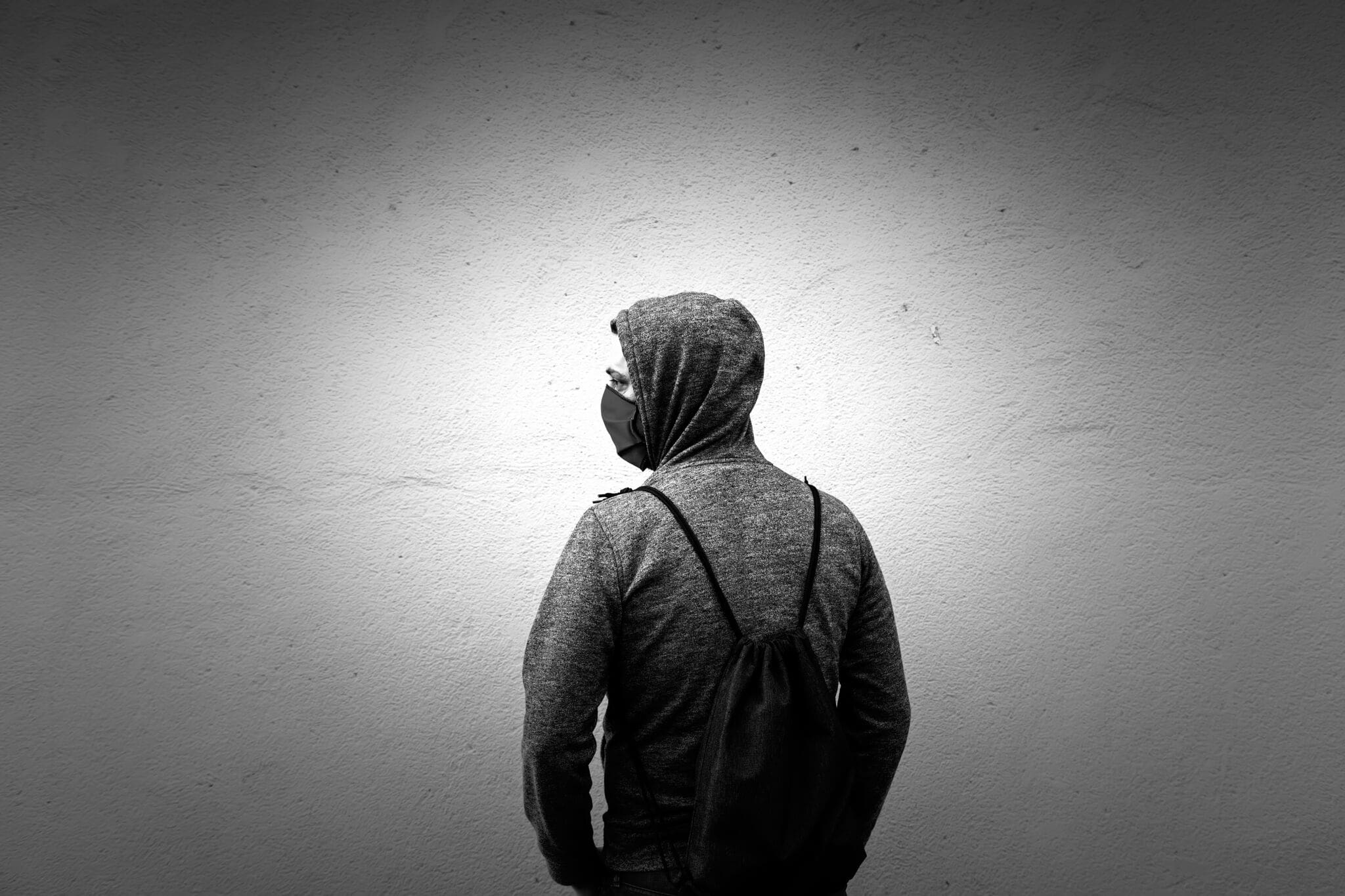In this article
Bullying is a serious issue that can have significant long-term and short-term consequences for the bullying victim. Statistics show that bullying behaviour is prevalent in childhood and adolescence and affects many young people. The 2023 Crime Survey for England and Wales (CSEW) found that 34.9% of 10–15-year-olds, equating to a huge 1,544,000 children, experienced in-person bullying, while 19.1% (847,000 children) experienced online bullying in the previous year alone.
Bullying can affect children of all ages and backgrounds. It can be a significant barrier to learning and can affect a young person’s academic achievement and overall school experience and have a serious impact on their mental and physical health. Being a victim of bullying during childhood or adolescence can affect many areas of the individual’s life, both short-term, when the bullying is taking place, and long-term, affecting them during adulthood.
What Classes as Bullying in Children?
Bullying is unwanted, repeated and intentional aggressive behaviour and harmful actions between school-aged children. For bullying to take place, there is usually a power imbalance between the bully and the victim. This power difference can occur because the bully has more power or strength. For example, they may be bigger, stronger, more popular, have higher social status or more money than the victim.
Bullying can take several forms, including:
Physical bullying
Physical bullying is the most visible form of bullying and involves direct, physical harm to the victim’s body or belongings. This could be physical violence, such as hitting, pushing or kicking, spitting on someone or damaging their belongings.
Verbal bullying
Verbal bullying is meant to hurt, humiliate or intimidate the bullying victim. It can include name-calling, insults, threats, racist and sexist remarks and offensive jokes.
Social bullying
Also known as relational bullying, this can be more difficult for other people (e.g., parents and teachers) to recognise. It involves damaging someone’s reputation or their relationships. This can be done through spreading rumours, excluding someone from a group or activity, publicly embarrassing them and manipulating friendships to isolate the victim (e.g., encouraging others not to talk to them and not to be friends with them).
Cyberbullying
Cyberbullying is becoming more common now that more children and young people than ever have access to mobile phones, tablets, computers, online gaming and social media. Cyberbullying can include online harassment, sending threatening or abusive messages, verbal bullying or humiliation that takes place online (e.g., through social media) or via text messaging or messaging apps, posting embarrassing photos and videos without consent, doxxing (exposing private information online) and creating fake profiles to impersonate mock or harass someone.
Cyberbullying is more difficult to escape than other forms of bullying as the perpetrator is able to reach the victim in their own home and the bullying is no longer limited to school hours.
Although bullying is a serious issue, not every conflict or disagreement between young people is classed as bullying. Children and adolescents are prone to arguments, friendship breakups and conflicts. The key difference is that bullying is repetitive and intentional. For example:
- A one-time argument or disagreement between friends – Not bullying
- Choosing not to be friends with someone because your interests don’t align – Not bullying
- Accidentally hurting someone during a playground game – Not bullying
- Repeatedly calling someone names – Bullying
- Telling other people not to be friends with someone – Bullying
- Pushing someone over to make other people laugh – Bullying

Physical Impacts
The physical impacts of bullying can be just as serious as the emotional and psychological effects. Long-term bullying can have short-term and long-term health problems as a result of the stress, anxiety and direct physical harm the victim experiences. Bullying can have an immediate physical effect on the victim, such as:
- Unexplained injuries, such as bruises, cuts, scratches and broken bones (from physical bullying).
- Complaining of frequent headaches or migraines, often caused by stress and anxiety.
- Stomach aches and digestive issues, as stress can lead to nausea, irritable bowel syndrome (IBS) or loss of appetite.
- Changes in sleeping habits, such as insomnia, nightmares or excessive sleeping due to emotional exhaustion.
- Loss of appetite or changes in eating habits, such as skipping meals or overeating.
- Unexplained physical symptoms, such as heart palpitations, dizziness and unexplained pain.
Although the physical effects of bullying can be immediate, the continuing stress, anxiety and trauma that bullying victims often experience can affect them long-term. This is often connected to the prolonged stress, anxiety and mental health difficulties that many bullying victims experience and which can affect the victim’s physical health in multiple ways.
Being a victim of bullying can also affect a child’s brain and development. Bullying can result in increased cortisol levels. Cortisol is also known as the stress hormone because it increases after a stressful event. However, a child being bullied is likely to be repeatedly experiencing high stress, which can result in consistently high cortisol levels. This can affect memory, concentration and a child’s ability to learn, as well as impact the immune system and hormone levels.
Psychological Impacts
Bullying can have serious psychological effects that can impact a child’s emotional well-being, behaviour and mental health. These effects can last long after the bullying stops and can affect the victim’s self-esteem, relationships and even how successful the victim is in their future career.
Some potential emotional and mental health effects of bullying victimisation can include:
- Anxiety and panic attacks: Victims may develop long-term anxiety, become fearful of social situations or have panic attacks.
- Depression: Victims often feel isolated, hopeless and like the bullying is never going to stop. The victim may feel there is no way to stop the bullying and that the negative behaviours of others and the negative emotions they are feeling will never end. These feelings can develop into more serious depression and victims may become withdrawn and lose interest in activities they once enjoyed.
- Low self-esteem and self-worth: Being constantly criticised or excluded can make children believe they are unworthy or not good enough and this can have a big impact on their self-esteem.
- Emotional distress: A bullied child may feel sadness or anger about their situation. They may also experience mood swings, although this can be harder to spot as mood swings can be common in adolescence.
- Feelings of loneliness and isolation: Particularly if the victim feels no one is supporting them or they have no friends they can turn to.
- Increased risk of self-harm: Some bullied children may begin self-harming as a way to cope with their emotions. Self-harm can also be a cry for help.
- Suicidal thoughts and behaviours: In extreme cases, victims of severe bullying may develop suicidal ideation or attempt suicide.
Being a victim of bullying can also affect how the victim acts and behaves in many areas of their life. It can also affect their relationships with other people. For example:
- Withdrawal from social situations: Victims may isolate themselves and avoid school, family events or friendships. They may have a loss of interest in socialising or spending time with friends and may begin avoiding certain places, such as hallways, the park and school buses.
- School avoidance: Fear of bullying can lead to the child skipping school, faking illness or asking to stay home frequently. Bullying victims are more likely to have frequent lateness and more school absences.
- Social exclusion: Being left out of social activities, such as receiving few or no invitations to birthday parties or social events and suddenly changing or losing friendships can be a sign of bullying victimisation.
- Difficulties trusting others: After experiencing bullying victims may struggle to form healthy relationships later in life because they don’t trust that other people won’t also hurt them.
- Changes in sleeping patterns: This can include insomnia, nightmares or bedwetting, with no apparent cause.
- Changes in behaviour: This could include unusual aggression, acting out or becoming more withdrawn. Some bullied children become bullies themselves as a way of coping with the bullying.
- Increased clinginess: Bully victims, especially younger children, may become clingier to their parents and refuse to go places alone.
- Risk-taking or substance abuse: Older victims may turn to alcohol, drugs or other risky behaviours to cope with emotional pain.
- Becoming secretive: Children who are being bullied online may become unusually secretive about their online activities or phone use.

Academic Impacts
Bullying can have a serious impact on a child’s education and lead to lower academic performance, lower attendance and long-term setbacks in learning and development. The stress caused by bullying can make it difficult for the victim to concentrate in class, engage in classroom activities and achieve as highly as they would if they weren’t being bullied.
One of the most immediate academic effects of bullying is a decline in concentration and focus. Victims often feel anxious, distracted or scared during the school day, which can make it difficult to listen, learn new information or participate in lessons. Their minds may be preoccupied with worries about when and where they will next be bullied and this can leave very little mental energy for learning. As a result, their ability to remember information, complete their work and perform well on tests can suffer.
School avoidance is another major consequence of bullying. Many victims begin skipping classes or pretend they are ill to avoid going to school. Frequent absences can cause students to fall behind in their work, struggle to keep up with lessons and ultimately receive lower grades. If the bullying is severe and happens long-term, some children may transfer schools, drop out or develop a lasting hatred of school.
Class participation also tends to decrease if someone is being bullied. The victim may avoid raising their hands, contributing to discussions or working on group projects out of fear of being mocked or ridiculed. This lack of engagement can negatively affect their confidence and overall learning experience. Over time, they may become withdrawn, reluctant to ask for help or hesitant to challenge themselves academically.
Bullying can also affect a child’s long-term educational trajectory. Students who experience severe bullying may develop negative attitudes toward school and be less motivated to go to college or university. Some may struggle with self-doubt and believe they are not intelligent or capable enough to succeed. Others may be so discouraged by their school experiences that they avoid academic or career-related challenges later in life.
Additionally, bullying victims often suffer from stress, anxiety and depression, all of which can interfere with cognitive function and academic performance. Poor sleep, loss of appetite and constant stress can make it even harder to concentrate and remember information. If left unaddressed, these issues can create a cycle in which academic struggles lead to further stress and a decline in overall well-being.
Early intervention can help prevent long-term impacts. Support from teachers, parents and school counsellors can make a significant difference in helping victims regain confidence in their abilities and re-engage in their education. Schools that implement anti-bullying programs and provide safe learning environments can also reduce the risk of academic decline among bullying victims.
Short Term Impacts
The negative impact of bullying can begin to affect a child as soon as they are first bullied. It can affect their mental, emotional, physical and social wellbeing, including their emotions, behaviour and day-to-day life. The short-term impacts of bullying can disrupt a child’s everyday life and, if not addressed, can have long-term consequences.
Being aware of the signs of bullying can help educators, parents, guardians and other adults recognise when a child is being bullied. Sometimes, identifying the signs of bullying can be difficult, as the victim may hide the bullying or the signs can be mistaken as something else (e.g., adolescent moodiness or laziness). Recognising when bullying is taking place can help adults address bullying behaviour before it gets worse and reduce the impact on the victim.
Bullying can take a serious emotional toll, causing sudden mood swings that range from sadness and frustration to sudden anger. Victims might break down in tears out of nowhere, lash out at people around them or withdraw completely. Many become overly cautious and feel constantly on edge, afraid of when the next incident will happen. Even in safe environments, like at home, the feelings of fear and anxiety can linger.
Children may also start to avoid social situations or places where they used to feel safe, such as the playground, the park or after-school clubs. They might withdraw from close friends, either because they fear being friends with them will put their friends at risk of also being bullied or because they aren’t worthy of having friends. In some cases, victims begin to copy the bully’s behaviour and might start bullying others as a way to regain some control and make themselves feel like less of a victim.
Bullying can also affect how a child talks to others. For example, some children may feel too worried to speak in case they say the wrong thing. They might start apologising for even tiny mistakes because they’re scared to be criticised or ridiculed. They also might lose confidence in their own abilities and become overly sensitive to any kind of feedback. This can result in an obsession with being perfect. For example, victims may become obsessed with looking and acting perfect in the hopes that their bullies will have nothing they can pick on them for and will leave them alone.
Some victims also start to engage in reckless behaviour, particularly in adolescence. This can be a way of acting out or a way to cope with and escape the bullying. Some young people may start skipping school, running away from home or engaging in risky online behaviour, such as oversharing personal information or communicating with strangers. Some bullying victims also start drinking or taking drugs as a way to self-medicate and deal with the stress and pain of bullying.
These short-term effects can escalate quickly and can lead to long-term emotional distress and self-destructive habits. Recognising these early warning signs and quickly providing support, whether through parental guidance, school intervention or professional counselling, can make a significant difference in a child’s overall well-being.

Long Term Impacts
Bullying doesn’t just stop affecting someone once it’s over. It can affect them for years, even into adulthood. The experience can leave emotional and psychological scars, that affect the way they see themselves, their relationships and their future career.
Bullying can also have a long-term impact on the victim’s mental health. It isn’t uncommon for bullying victims to struggle with anxiety, depression or even post-traumatic stress disorder (PTSD). The feelings of worthlessness and self-esteem that victims often feel can follow them into adulthood and make it difficult to feel confident enough to take risks or take on new challenges.
Some adults still believe the insults they heard as children, which can hold them back in their work and their relationships. In the worst cases, the emotional wounds never fully heal and that pain can lead to thoughts of self-harm or suicide, especially if they never got the support they needed.
People who were bullied in childhood often struggle with relationships as adults. They may find it difficult to trust others because of previously feeling rejected, disliked or betrayed. Some people avoid social situations altogether and avoid friendships and relationships because they are afraid of getting hurt. They may act defensive or closed off without even meaning to and the loneliness they felt in childhood can follow them into adulthood.
Bullying can also take a toll on the body, mostly because of chronic stress. Years of anxiety can lead to high blood pressure, a weak immune system or even heart problems. Some people deal with constant stomach issues, migraines or muscle pain, all of which are linked to stress. In trying to cope, they might turn to things like stress eating, smoking, drinking or other unhealthy habits, which can cause even more problems down the road.
Being a victim of bullying can also affect the victim’s future career success. Bullying can affect self-confidence and, in the workplace, this can make it difficult for someone to assert themselves. The fear of being criticised or rejected can also deter someone from pursuing a promotion or applying for a leadership role. Some people develop imposter syndrome and don’t feel like they deserve their achievements.
For some victims, the trauma of being bullied becomes part of their self-identity and can shape how they see themselves. If they were bullied for specific traits, such as the way they look or act, they may continue to carry shame or insecurity about those parts of themselves throughout their life. In some cases, those who were bullied may unconsciously repeat the cycle and may be more likely to tolerate toxic behaviour or be in an abusive relationship because they have been conditioned to accept mistreatment or feel they don’t deserve any better.






